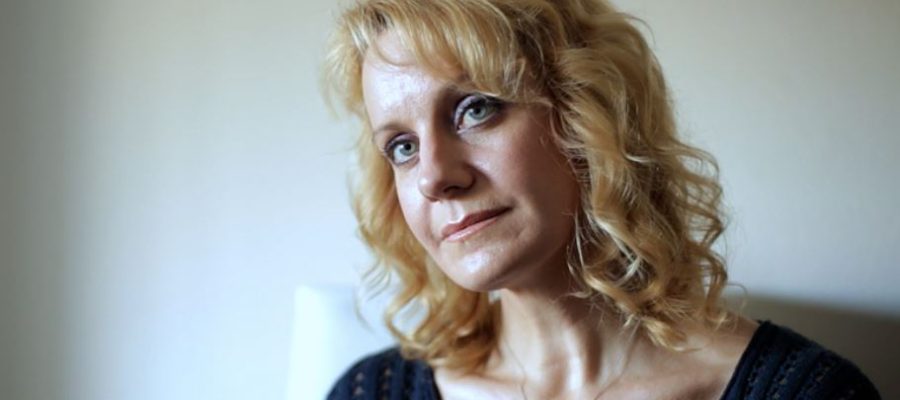BETHEL, CONN./ MARCH 21, 2018 – In her Academy award acceptance speech, Frances McDormand encouraged actors to add contract inclusion riders to improve diversity in the film industry. When actress Eileen Grubba heard the speech, she cheered. Growing up and living with a disability, Grubba has become a leading advocate for the inclusion of performers with disabilities in film and television.
Grubba, whose film career spans over twenty-five years, has a reputation for delivering outstanding performances that depict strong, edgy women in shows like Sons of Anarchy, HBO’s Hung and NBC’s Game of Silence. As someone who understands what it means to be looked at differently in casting calls because of her disability, her hope is not to be given special treatment, but for actors to simply be given equal opportunity.
Historically, movie roles for characters with disabilities have more often than not been played by non-disabled actors. Best Actress nominee Sally Hawkins played Elisa, a mute cleaner who communicates only through the use of sign language in The Shape of Water. While Hawkins clearly delivered an Oscar-worthy performance, she joins a long list of non-disabled actors receiving Academy Award nominations for playing characters with disabilities. Meanwhile, performers with real disabilities are rarely granted auditions for any role, disabled or not.
By negotiating for riders when signing contracts for movies, big-name actors have the ability to drastically change representation in film. An inclusion rider is a stipulation that the cast and/or the crew in a film reflect real demographics, including a proportionate number of women, minorities, LGBTQs and people with disabilities. Grubba also asks that when a name actor takes on a disabled lead role in order to greenlight a film, that they insist that at least one performer with a real disability be given a substantial role in the same film.
Grubba shared her story in a recent interview with Kris Foss, Managing Director of Disability Solutions. Grubba supports the mission of the nonprofit consulting service that works with employers to recruit and hire people with disabilities. Grubba believes the bigger issue for why there is a clear lack of characters in film played by actors with disabilities, stems from common misconceptions regarding the broad range of diversity within the disabled community and the perceived lack of ability that often surrounds people with disabilities. Jobseekers with disabilities are often faced with this same stigma.
“I feel like it’s a mistake to underestimate someone who has a disability before you find out what they are capable of,” says Grubba. “My disability doesn’t matter for most things. But the fact that I’ve had to get through life adjusting to all these things only makes me better, stronger and more resilient.”
Foss notes many people with disabilities share the same positive character traits as Grubba; determination, problem solving and resiliency. “These qualities are an asset to any job, whether it’s acting or accounting. Changing the culture in the entertainment industry and in the private sector all starts with those in a position to hire people placing an emphasis on all inclusive diversity in the workplace.”
Grubba believes that Hollywood is missing out on hidden talent in the disability community. In describing her own experience tapping into her pain to bring out emotions in her characters, she says “I have a depth that I don’t think a whole lot of people really truly understand. They might think they do, but until you’ve lived most of your life in the kind of pain that would drop most people, and dealt with cancer, and faced rejection after rejection and absolute humiliation at the hands of so many people, the depth that I’m talking about is so rich and so scary, that I don’t think a whole lot of people can manufacture that level of emotion as completely and as deeply. That’s what these challenges do to you. They make you unique, edgy and absolutely resilient.”
For Grubba and other actors with disabilities, coping with their challenge is only half the battle as unfortunately, opportunities for them are limited. Part of the problem is there are simply not enough roles to fill that represent characters with disabilities. In a recent study on Inequality in 900 Popular Films, across the 100 top-grossing movies of 2016, just 2.7% of characters were depicted with a disability. When comparing this to the fact that nearly 1 in 5 people in the U.S. has a disability, diversity in film is clearly not represented in a way that reflects our society.
Grubba describes her own experience, “When I was young and came out to LA, at first, the floodgates were open. I was in every room (auditions), and was doing well. I was getting great feedback and called back to producers. But as they discovered my limp, those doors shut. I spent the next ten years getting three to five auditions a year. How is someone supposed to work when they get three to five auditions a year? You can’t. Most actresses get three to five a week. I know actresses who get three a day.”
In addressing the impact a lack of auditions has on individuals with disabilities, Grubba states, “How is that person supposed to have the same opportunity, unless we have really open minded people doing those interviews, welcoming them and making them feel safe? They may have the skills, but they don’t have the same confidence level because they haven’t been given the same number of opportunities to master it.”
Grubba sums up the necessity for putting more people with disabilities in film and television by saying, “It all happens faster when we see it on T.V. Commercials, film, all media, when we see disability represented fairly and in a positive light, a real, true light, that’s when we’re going to open up the world to including the other 20% of our population who I believe are our greatest problem solvers. We’ve been keeping out our problem solvers for far too long.”

